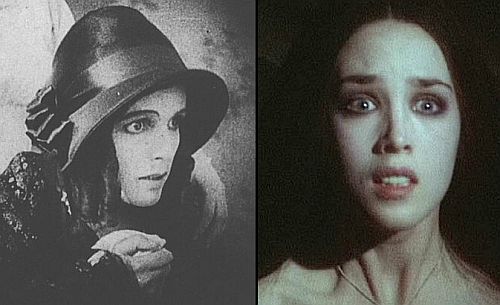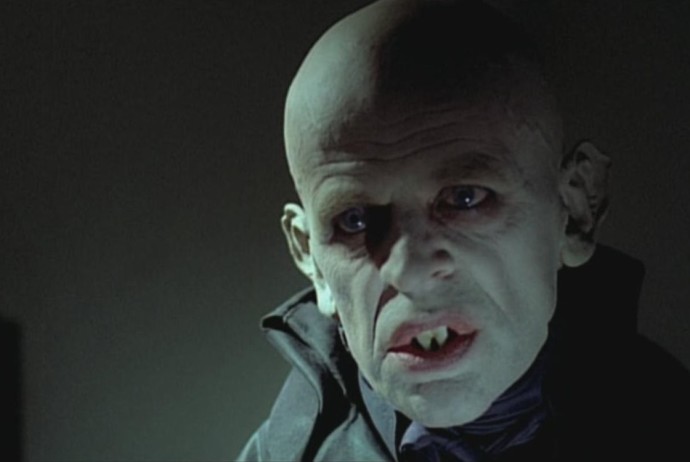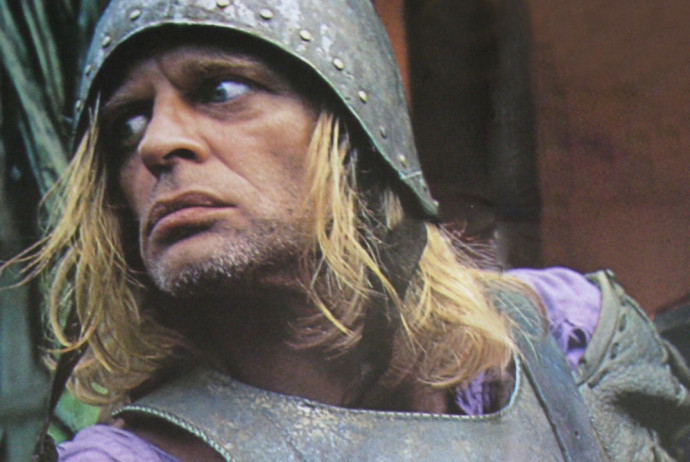Dir: Werner Herzog
Star: Klaus Kinski, Isabelle Adjani, Bruno Ganz, Roland Topor
I’ll confess, I have never been able to get through this one without falling asleep, and always feel guilty about dozing off. It possesses a very languid sense of pacing, unfolding at the pace of an unmanned sailboat drifting into dock – one of the most memorable sequences depicts exactly that. Quite often, I found myself urging the film to get on with it, as in the trip by Jonathan Harker (Ganz) from the local village up to Dracula’s castle, which appear to unfold in real time. Still, asking Herzog to hurry up is a pointless exercise – it’s not what he does.
There’s certainly a wonderful sense of atmosphere, right from the opening shot which pans along a series of what you first think are dolls, only to eventually realize they are actual mummified corpses [victims of a cholera epidemic in 1830’s Mexico, filmed by Herzog – the cemetery was also used as a location in El Santo contra las momias de Guanajuato]. When you see Kinski’s Dracula, it’s an incredibly-creepy sight, even if you wonder why Harker completely fails to notice the fangs and claws which his real-estate client is sporting.
 It is, very much, a loving homage to F.W. Murnau’s original, though the expiration of copyright allows Herzog to use the actual names of the characters, rather than, as Murnau did, make them up in a (failed) attempt to avoid a lawsuit. The make-up is almost identical, not just on the vampire, but on Lucy Harker (Adjani), who has the same pasty-pale pancake on her face and perpetually-concerned expression as Ellen Hutter in the original – see the illustration on the left. Indeed, sometimes the only way to tell her and Dracula apart is to look for the pointy teeth.
It is, very much, a loving homage to F.W. Murnau’s original, though the expiration of copyright allows Herzog to use the actual names of the characters, rather than, as Murnau did, make them up in a (failed) attempt to avoid a lawsuit. The make-up is almost identical, not just on the vampire, but on Lucy Harker (Adjani), who has the same pasty-pale pancake on her face and perpetually-concerned expression as Ellen Hutter in the original – see the illustration on the left. Indeed, sometimes the only way to tell her and Dracula apart is to look for the pointy teeth.
The relationship between Kinski and Herzog on this one was relatively peaceful, helped by the chore of getting the lead ready for his close-up. “If Kinski would start a tantrum, it would be four hours of make-up again,” said Herzog, a prospect which apparently kept Klaus reined-in. There were more problems with the thousands of rats which were needed by Herzog. The Dutch city of Delft, having just dealt with a rodent infestation, was unimpressed by the idea of letting large numbers roam their city. Additionally, the laboratory rats bought were white, and needed to be dyed: they responded to the process by licking themselves clean.
While Kinski is great at capturing the tortured angst of an immortal soul, who yearns for death as an escape from his loveless existence, it’s too restrained to be truly effective. Kinski is at his best when he’s not constrained, when there is a sense of him being unleashed in front of the camera. Here, it’s more a sense of someone who is tired of everything, who can barely be bothered to go through the motions any more, and completely lacking in passion. If that makes him a somewhat tragic figure, it’s not one in whose company you want to spend much time.

